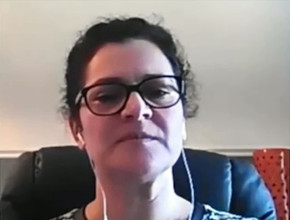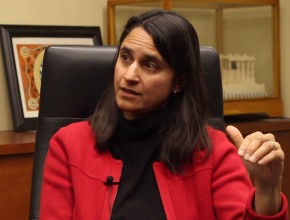References
Goldberg WM. An Internist’ Journey with Behavioural Medicine. Can J Gen Int Med. 2016;10(4):6-9. doi:10.22374/cjgim.v10i4.84.For part 2 of this interview, click here. For part 3 of this interview, click here.
This transcript has been edited for clarity and expanded.
Roman Jaeschke, MD, MSc: Good afternoon. I would like to introduce a very special guest, Dr William Goldberg, who contributed to the development of the health-care system in Hamilton [Ontario, Canada] before the medical school was established; and the medical school was established 50 years ago.
Dr Goldberg, could you reminisce a little bit about those times?
William Goldberg, MD, DSc: What happened before the medical school was that Hamilton decided to regionalize: it was decided that we would divide up tertiary care between the 2 major hospitals. St Joseph’s Hospital was designated to nephrology and respirology and Hamilton General Hospital, to cardiology and neurology. That’s where the open heart surgery would be, and we at St Joseph’s would be the dialysis center.
We began about 4 years before. We thought that if we wanted these tertiary specialties in Hamilton, the only way to accomplish this is by having each hospital take a major role and be the center, and we would work together.
At the same time at St Joseph’s Hospital we had had a little bit of advance because we had already developed the dialysis unit in about 1964 or 1965. We developed the intensive care and the coronary care units, as well as respirology, and we were well on the way to getting that started. We were very lucky to bring in some new young staff that took over these divisions and really were responsible for their success.
Roman Jaeschke: I guess they are all retired by now.
William Goldberg: They are all retired.
Roman Jaeschke: You had so many innovative things. One of them, which actually prompted this interview, was our discussion about chronic pain and behavioral therapy. I wonder whether you could expand on this topic.
William Goldberg: We were seeing a lot of patients with chronic fatigue and chronic pain when I was in practice, in consultation, and you could never seem to help them. I got the idea that maybe if a psychiatrist and I got together, we could work together and convince these people that they weren’t mentally ill, they weren’t lying, they weren’t malingering. They had a real problem and we just didn’t know the cause of it. But hopefully, when we explained that to them, they would improve.
However, what we did find is that after we told them we didn’t think they were malingering or mentally ill, and we brought them back a few weeks later and asked them what was the message they received, it was that we thought they were making it up and, secondly, that we were probably crazy. So we accomplished nothing in those interviews, and they were right. I think it probably caused even more problems with them.
In any case, Dr Norman White, who was a psychiatrist in that group, decided that the new approach was cognitive behavioral therapy (CBT), and a psychologist at McMaster University, Dr Arny Cott, was interested in this area. So the 3 of us got together and interviewed patients. That was when we started realizing that the problem with the patients was, firstly, their strong belief system that they had some disease that hadn’t been found by anybody else and may be found in the future by more investigation or, secondly, that everybody was against them and doctors didn’t think it was real. It was a conundrum, but I think we changed that belief.
We started out with a thesis, and by the cognitive behavioral approach, which I won’t go into great detail about, we were able to help a lot of these patients by changing their belief, getting them into a rehabilitation program, or increasing activities. We wanted to get them to be more active in a slow, progressive fashion. This would reinforce our original belief that they were not suffering from any serious disorder, and they were improving and would continue to improve.
Roman Jaeschke: You mentioned that you won’t go into details on the CBT, but I hear this statement frequently and then there are no details. Give us one minute of details. What is this CBT?
William Goldberg: CBT relies on the process where you find out what drives the illness behavior of the patient and what determines what we call the illness-disease distinction.
Let’s say we have somebody with chronic back pain. There’s no discernible cause and they’re totally disabled. There’s been no cause despite thorough investigations. The patients just end up being inactive. They avoid activity. They rest. They often have to stop work. They’re getting problems with workmen’s compensation, with insurance companies or, if they had a car accident, with litigation, and the whole thing just escalates. The first thing in CBT is to convince these people that they have no definable disease, and that what they’re demonstrating with all this avoidance behavior is the problem. That’s what the illness behavior is.
Roman Jaeschke: So how do you demonstrate it to them?
William Goldberg: That’s the point. You’ve got to get them to, first, believe that they have no underlying disease and then, secondly, you have to get them to change their belief and enter a program where they increase their activities in a slow, progressive fashion, such as an exercise program.
Plus you start paying attention to the problems that are causing their attitude. That is, for example, their problems at work, with their lawyer, with their wife, with the kids. We’re trying to address those and get them into a single message. Everybody supports the client.
Roman Jaeschke: Were you successful?
William Goldberg: It was very successful. We started out doing this on one-to-one basis. [At first] Dr Cott carried out the behavioral therapy, and what Dr White and I did was that we would make sure no disease was missing and they had no mental disorder. He did this in an office situation. It worked not badly, but not perfectly. It was difficult.
However, he got the idea that we should have someone work with the patient on a one-to-one basis. He developed the concept of the field consultant, whom he trained in cognitive behavioral principles, and had the field consultant work with the patient on a one-to-one basis in their home, not in an office. We then did a study of a group of patients that were examined in the office setting, clinic setting, and of another group working with the field consultant. We had about a 70% or even 80% improvement in the field consultant group and maybe a 30% improvement in the office group.
Roman Jaeschke: When you say improvement, is it quantitative? Or was it return to work or to activity?
William Goldberg: It was eventually return to normal activities of daily living.
Roman Jaeschke: That’s quite something. What happened to this unit in the end?
William Goldberg: The cognitive behavioral aspect was never covered by any insurance or the government.
Roman Jaeschke: So patients or insurance companies had to cover.
William Goldberg: That’s right. We had a worry about the source of patients… Frankly, Stelco [a steel company] was of great help to us, because Dr Jim Charters, who worked at Stelco, understood what we were doing and ended up referring a great number of patients to us, and we were able to get a great number of patients off disability. In fact, they supported us financially for the first couple of years.
Roman Jaeschke: Well, maybe it will come back again, as new is coming back quite frequently.
William Goldberg: Unfortunately, there is a great division between psychiatry and psychologists and cognitive behavioral groups I’ve been working with. I think you have 2 silos there. They say they get together, but frankly, I don’t think they do.
Roman Jaeschke: You obviously had to have patients who were committed as well and convinced that it could work.
William Goldberg: That’s the first thing: they have to be committed. In fact, that’s the biggest problem.
 English
English
 Español
Español
 українська
українська











